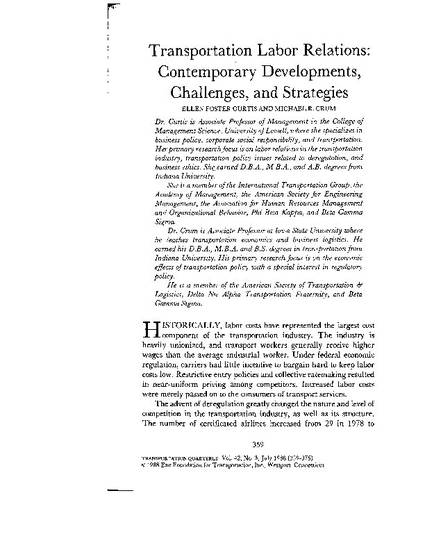
Article
Transportation Labor Relations: Contemporary Developments, Challenges, and Strategies
Transportation Quarterly
Document Type
Article
Disciplines
Publication Date
7-1-1988
Abstract
Historically, labor costs have represented the largest cost component of the transportation industry. The industry is heavily unionized, and transport workers generally receive higher wages than the average industrial worker. Under federal economic regulation, carriers had little incentive to bargain hard to keep labor costs low. Restrictive entry policies and collective ratemaking resulted in near-uniform pricing among competitors. Increased labor costs were merely passed on to the consumers of transport services.
Copyright Owner
Eno Foundation for Transportation, Inc.
Copyright Date
1988
Language
en
File Format
application/pdf
File Size
17 p.
Citation Information
Ellen F. Curtis and Michael R. Crum. "Transportation Labor Relations: Contemporary Developments, Challenges, and Strategies" Transportation Quarterly Vol. 42 Iss. 3 (1988) p. 359 - 375 Available at: http://works.bepress.com/michael_crum/8/

This article is from Transportation Quarterly 42, no. 3 (1988): 359–375. Posted with permission.